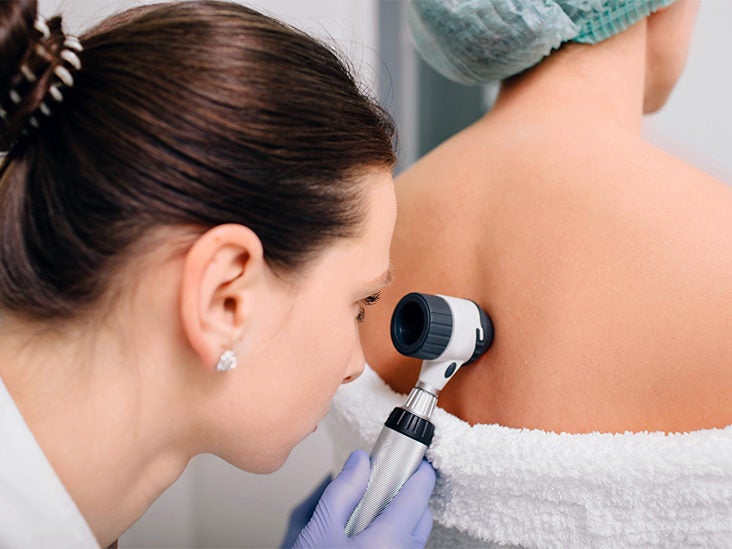What Does A Dermatologist Do for Dummies
What Does What Does A Dermatologist Do Do?
Table of ContentsWhat Does What Does A Dermatologist Do Do?The Buzz on What Does A Dermatologist DoThe Basic Principles Of What Does A Dermatologist Do How What Does A Dermatologist Do can Save You Time, Stress, and Money.What Does What Does A Dermatologist Do Mean?What Does A Dermatologist Do Can Be Fun For Anyone
There is no stitching included and also the injury heals on its own over a period of 1 to 3 weeks, depending on the location of the treated location. Because the injury is normally surface, the resulting scar is unnoticeable or marginal. If the treatment goes much deeper right into the skin, the resulting scar will be more noticeable and also the form of the scar will be the shape of the cut removal.
A special cylinder is usually used to spray the liquid nitrogen straight onto the development; nevertheless, sometimes the fluid nitrogen is straight applied with a cotton tip applicator. The treatment does not include any type of numbing of the skin, includes minimal pain, as well as is performed within a couple of minutes in the office.
A couple of days after the treatment, you may see a black sore at the treatment website. This is typical; the blister is generally laid off and dries or tears in a few days. When the cold is superficial, the resulting mark is very little to undetectable. When the freezing is much deeper, the resulting mark may be more visible and show up as a white blemish.
The Ultimate Guide To What Does A Dermatologist Do
Generally, throughout the course of the treatment, the treated area comes to be irritated and has a tendency to crust. Your skin specialist will certainly check the cured area to see to it that there is not as well much or not adequate reaction to the representative. Some representatives are more annoying than others, as well as some representatives are more efficient than others.
After the treatment is finished, your physician will describe to you the postoperative wound care instructions. Crusting of the cured area shows up the day after therapy, and mindful sunlight security and also sunlight evasion is needed.
After the procedure is completed, a plaster will be placed over the injury area as well as you will certainly receive postoperative wound treatment guidelines. There is no sewing entailed, and the resulting injury heals by itself over 1 to 3 weeks, depending on the location of the area being treated and the depth of the ED&C.
Some Known Details About What Does A Dermatologist Do
After the wound has recovered, the resulting mark may appear pink and also raised and also typically boosts in look over several months to a year. Traditional excision, A traditional excision involves the removal of the development and also a percentage of normal skin surrounding the growth. It is a straightforward procedure executed by your dermatologist under regional anesthetic.
This procedure allows your specialist to get rid of the skin cancer totally, while protecting as much normal skin as possible and also achieving the highest treatment price. In Mohs micrographic surgery, the skin cancer is removed in layers. Each layer of cells is taken a look at under the microscope to determine the area as well as level of the skin cancer prior to more tissue is eliminated.
Prior to your surgical procedure, you might have a preoperative visit. This visit gives you the opportunity to meet your dermatologist and the medical staff and to discover more about your surgery. Your dermatologist will certainly check out the skin cancer cells, acquire your case history, and also discuss with you a fantastic read the rebuilding alternatives that might be suitable for you.
How What Does A Dermatologist Do can Save You Time, Stress, and Money.

As soon as the location is numb, the doctor will cut a layer of skin and tiny areas will be prepared in the pathology laboratory next to the operating space. You will continue to be in the workplace while the sections are processed and also taken a look at under a microscopic lense. Depending upon the amount of skin got rid of, processing usually takes 30 to 45 mins.
A lot of skin cancer cells is gotten rid of in one to three medical stages. After elimination as well as the extent of the last skin defect is understood, your dermatologist will certainly go over with you the most appropriate reconstructive choice.
How What Does A Dermatologist Do can Save You Time, Stress, and Money.
As your wound heals, you might also experience short-lived tightness and also itching across the surgical location (What Does A Dermatologist Do). Significant blood loss is unusual, however hemorrhaging might occur after surgical treatment. A follow-up browse through will be scheduled after the surgery to ensure that the skin cancer is not repeating as well as that the healing process and maturation of the scar is taking a typical program.

If nondissolvable stitches are utilized, they will be removed 1 to 2 weeks after surgical treatment (What Does A Dermatologist Do). Due to the fact that the injury is usually stitched, the resulting scar is direct. If the area of skin gotten rid of is large as well as can not be stitched side-by-side, after click this that a skin graft might be utilized to fix the location.
What Does A Dermatologist Do Can Be Fun For Anyone
/Primary_Image-c039ca0948bd4161afbac34036d4b245.jpg)
The specialist adheres to the movement of the radioactive dye on a computer display making use of a contaminated counter. The first lymph node containing the substance is called the sentinel lymph node. The visualization of the lymph nodes, together with a radioactive tracer, is called a lymphoscintigraphy. Then, during the biopsy, the cosmetic surgeon makes use of a radioactive counter and seeks the lymph nodes that are stained with heaven color.